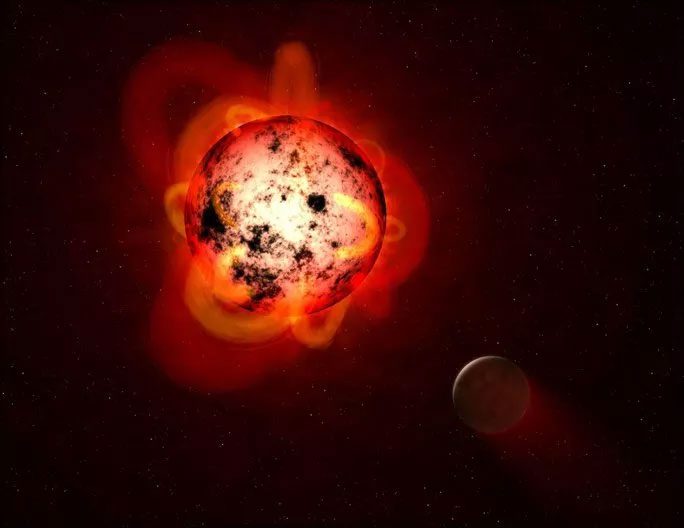In the search for cool and habitable stars within the galaxy that contains Earth, scientists have discovered several Earth-sized planets. However, new research suggests that these findings may not bring good news.
A study recently published in Astrophysical Journal Letters examined a planet named GJ 1252b. According to NASA, GJ 1252b is a rocky planet—similar to Earth—and has a size comparable to our planet, with a mass 1.32 times greater than that of Earth.
GJ 1252b is bathed in the red light of GJ 1252, a red dwarf star located 66 light-years away from Earth. The distance between the planet and its star is only 0.00915 times that of the distance between Earth and the Sun. However, since red dwarfs are much cooler than the Sun, GJ 1252b remains a point of interest in the search for extraterrestrial life.

Graphic depicting a red dwarf star with intense radiation despite being cooler than the Sun, bathing its planet in softer red light but with radiation strong enough to strip away the atmosphere – (Photo: PHYS)
However, the new research brings bad news: scientists are confident that GJ 1252b has no atmosphere, which is one of the essential conditions for life to be protected from harmful cosmic impacts, allowing it to exist and evolve.
Since its discovery in 2020, calculations regarding the distance between GJ 1252b and its star, as well as the temperature of the host star, had previously indicated that the chances of this planet being habitable were nearly zero due to extreme heat. Yet, because of its many Earth-like properties, it still presents excellent conditions to become a “laboratory.”
If another planet similar to GJ 1252b were found farther from its star or with a cooler host star, astronomers believe that would be a promising land for life. The new study dismisses that hope, asserting that anything resembling GJ 1252b would not be able to sustain life, regardless of being cooler.
Dr. Michelle Hill from the University of California, Riverside (UC Riverside, USA), a co-author of the study, stated that the main reason is that the cool stars like GJ 1252b have intense radiation compared to the Sun.
This is a second piece of unfortunate news, as red dwarfs are the most common type of star in the Milky Way galaxy, accounting for up to 75% of all stars.
Computer models based on data collected by observatories worldwide indicate that the red dwarf GJ 1252 is powerful enough to “strip away” its planet, meaning it literally blows away the entire atmosphere.
Citing the research, the journal PHYS noted that Earth has also lost part of its atmosphere compared to the Sun, but other carbon cycles quickly compensated for this loss. However, a planet too close to its star would not ensure this compensatory cycle. It would continue to lose its atmosphere until it reached zero.
In our Solar System, this is the fate of Mercury. However, despite being hotter, the Sun’s radiation is somewhat less harsh, allowing Mercury to retain a thin atmosphere.
GJ 1252b, on the other hand, is barren. This also contributes to raising the daytime temperature of this locked planet, which can exceed 1,200 degrees Celsius. And even though nighttime temperatures are cooler, life would still struggle to exist without a protective atmosphere.
“A planet could have carbon levels 700 times that of Earth but still lack an atmosphere” – Dr. Hill emphasized.
Nevertheless, this discovery is not entirely bad news for planetary scientists. With over 5,000 exoplanets discovered, NASA cannot examine each one in detail, even with the most advanced telescopes.
This finding will help scientists significantly narrow down the search area and define more accurately what a potential “Earth 2.0” might be.




















































